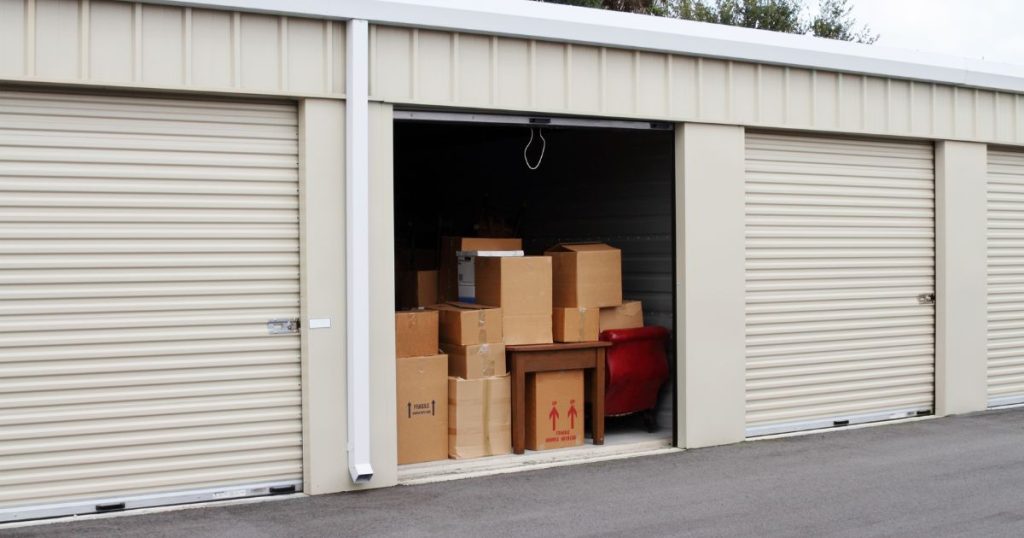To sign up for our daily email newsletter, CLICK HERE
Mice may seem harmless, but their presence in storage spaces poses significant dangers you shouldn’t overlook. These rodents can cause structural damage, contaminate food, and introduce diseases, making it essential to address their presence promptly. In Fort Worth, where humidity and proximity to fields encourage rodent activity, a storage area can quickly become a breeding ground.
Ignoring the signs of a mouse infestation can lead to costly repairs and health hazards. You might discover chewed boxes, droppings, or nesting materials indicating a serious problem. Taking immediate action can protect your belongings and ensure a clean environment.
Preventive measures are crucial to keeping mice out of your storage spaces. Regular inspections, proper sealing of entry points, and maintaining cleanliness can significantly reduce the risk of an infestation. Understanding the dangers of mice in storage spaces will empower you to take the necessary precautions.
Understanding the Risks of Mice in Storage Spaces
Mice infestations in storage areas can lead to significant health hazards and damage to your belongings. Recognizing these risks is essential for maintaining a safe and usable storage environment.
Health Hazards Posed by Mice Infestations
Mice can carry several diseases that pose serious health risks. Hantavirus, leptospirosis, and salmonella are illnesses transmitted through mouse droppings, urine, or nesting materials. When you disturb a nest, the particles can become airborne, increasing the risk of inhalation.
Additionally, exposure to mice can trigger allergic reactions in sensitive individuals. Symptoms may include sneezing, runny nose, and asthma attacks. To mitigate these health hazards, it’s important to keep storage spaces clean and monitor for signs of mice, such as droppings or gnaw marks.
Structural and Material Damage from Mice
Mice can cause extensive damage to storage rooms and their contents. They have a natural tendency to gnaw on various materials, including wood, plastic, and electrical wiring, which can compromise the structural integrity of shelving and storage units.
In addition to physical damage, mice may contaminate food items and other stored goods with their droppings and urine. This not only renders products unusable but can also attract other pests. Regular inspections and preventative measures, such as sealing entry points and maintaining cleanliness, protect your storage spaces from mice damage.
Evaluating the Impact on Stored Items

Mice pose significant threats to items stored in spaces, leading to both physical damage and economic loss. Understanding these effects can help you take preventative measures.
Physical Damage to Storage Contents
Mice can cause various forms of physical damage to your stored items. They gnaw on cardboard, wood, and plastics, compromising the integrity of boxes and containers. This behavior can expose contents to moisture and pests.
Textiles are particularly vulnerable, as mice may create nests using fabric, leading to irreparable harm. Electrical wiring in stored appliances can also be at risk, with potential fire hazards due to bite marks. To protect against these threats, consider using rodent-proof containers and sealing gaps in storage areas.
Economic Implications of Mice Damage
The economic impact of mice damage in storage areas can be substantial. Repair or replacement costs for damaged items can quickly accumulate, especially with valuable possessions. For instance, insulation damage in stored appliances could lead to expensive repairs.
The prevalence of mice in Fort Worth can lead to increased pest control expenses. You might consider investing in services or products to mitigate the rodent problem. Regularly inspecting stored items and proactive measures are essential to minimize these economic consequences. Investing in proper storage solutions can save you money in the long run.
Approaches to Mice Extermination and Prevention

Addressing mice infestations in storage rooms requires effective extermination methods and proactive preventative measures. Understanding these strategies can help you maintain a pest-free environment.
Professional Extermination Methods
When faced with a significant mice infestation, professional extermination may be necessary. Exterminators use a combination of traps, baits, and rodenticides tailored to the specific situation.
- Traps: These can be traditional snap traps or more advanced electric traps, which dispatch mice quickly and humanely.
- Baits: Poison baits must be placed strategically to minimize risk to non-target animals and children.
- Rodenticide use: Professionals are trained to apply these safely, ensuring compliance with regulations.
Consider contacting Critter Stop, known for humane wildlife removal, to evaluate your situation. They have a fantastic reputation, and their professionals are equipped to handle your mice extermination effectively needs.
Preventative Measures and Best Practices
Preventing mice infestations begins with your storage space. Implementing best practices can significantly reduce risks.
- Seal Entry Points: Inspect walls, doors, and vents for gaps. Seal these openings with steel wool or caulk.
- Maintain Cleanliness: Store items in airtight containers and food in sealed packaging. Clean and declutter regularly to eliminate hiding places.
- Regular Inspections: Monitor for signs of mice, such as droppings or gnaw marks. Early detection facilitates quick action.
If you’re struggling with mice in your storage areas, call Critter Stop at (214) 234-2616 for a free inspection. Their quality work and outstanding customer service can help restore peace of mind.
—